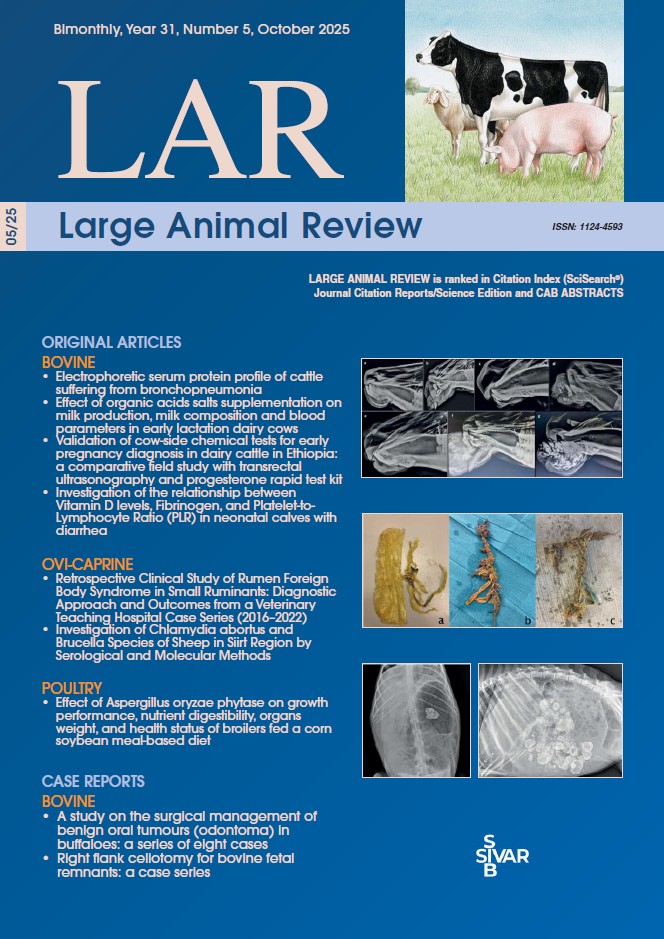Investigation of Chlamydia abortus and Brucella Species of Sheep in Siirt Region by Serological and Molecular Methods
Abstract
Chlamydiosis and brucellosis, which cause abortion cases in animals, are among the major zoonotic agents that are widely distributed across the world. This study aimed to identify Chlamydia abortus (C. abortus) by using serological and molecular methods and Brucella spp. by using conventional bacteriological, serological, and molecular methods in blood and vaginal swab samples collected from aborted sheep in the Siirt region in Turkiye. In the study, 200 vaginal swab samples and blood samples were collected from 350 sheep with a history of abortion. The 350 serum samples collected from the aborted sheep were tested for C. abortus by ELISA and Brucella spp. by the Rose Bengal Plate Test (RBPT) and the Serum Agglutination Test (SAT). Furthermore, vaginal swab samples collected from the same sheep were analysed by conventional and molecular methods for Brucella and molecular methods for C. abortus. As a result of the serological analysis, it was found that C. abortus was 11.42% and Brucella spp. was 22.28% and 11.71% in terms of RBPT and SAT, respectively. However, as a result of the Polymerase Chain Reaction (PCR) analysis, no positive results were obtained for C. abortus. Conventional bacteriological and molecular analysis of vaginal swab samples indicated that B. melitensis was identified in 11 (5.5%) isolates. According to biotyping tests, B. melitensis biotype 1 was identified in 2 isolates and B. melitensis biotype 2 in 7 isolates. By using the disk diffusion method, all B. melitensis isolates (100%) were found to be susceptible to doxycycline, tetracycline, gentamicin, streptomycin, and ciprofloxacin. Consequently, it was determined that C. abortus and B. melitensis may play a role in abortion cases in the Siirt region. It is thought that the sensitivity of the isolates obtained to the antibiotics used will contribute to the treatment of Brucella species, which pose a significant risk to public health.


